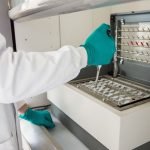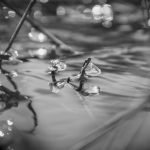Notes from the Field: January 2022
JARED L. ZEFF, ND, VNMI, LAC
The following is not an article prepared for a medical journal. Not every statement of fact is cited or referenced. This is a commentary on the medicine, a running set of observations about practice in the field. It’s not meant to be a peer-reviewed presentation; rather, these are notes and thoughts from a practicing naturopathic physician, a primary care doc in general practice.
Water Fasting
Having just come through the Christmas holiday season, I was directed to fast for a few days. By directed, I mean that I was praying, and as I was, it came to me to fast for a few days. I saw in my mind that this meant from Monday through Friday, the 27th through the 31st of December. For me, fasting means water only. I may have a little broth if I am working and need to stay focused, but this time I did not need to. When God tells me to fast, it is relatively easy to fast. If I decide to do it without divine instruction, it can be very difficult, and I will rarely complete the appointed time. But this time, I was apparently assisted, and did not suffer distracting hunger. It gave me a time to contemplate my work over the past year and to look to the next year for direction, for a vision. And perhaps this was the purpose of my fast.
Fasting is one of the most powerful therapeutic modalities we have. Fasting is instinctive. It is intrinsic to our body’s economy. When we are ill, particularly with a febrile illness, we tend to fast. Trevor Salloum, ND, wrote a little fasting guide for us (Fasting: Signs and Symptoms: A Clinical Guide) about 30 years ago, and Steven Bailey, ND, wrote The Fasting Diet about 20 years ago. Both books are hiding somewhere in my professional library; I read them years ago. Then Alan Goldhamer, DC, developed the TrueNorth Health Center, a fasting institute in Santa Rosa, California, to help guide people through a long water fast.1 (More information about the TrueNorth Health Center can be found at its website: www.healthpromoting.com)
The first time I fasted was after reading Arnold Ehret’s Mucusless Diet Healing System and Rational Fasting in my 20s, before I had heard of naturopathic school. I did a short water fast, got incredibly sick, and decided it was a bunch of bunk. I did not understand the physiology of fasting. I did not know that I was experiencing a detoxification. I was also a fan of Gandhi. Reading his autobiography and some of the many pamphlets he wrote, I learned that he fasted extensively, primarily for political purposes. So, I forced myself to maintain the fast until I felt too sick to continue, wondering whether I was damaging myself. I decided that fasting was a bad idea.
A few years later, I entered the National College of Naturopathic Medicine, the only naturopathic institution in North America at the time. There, I met Charley Cropley. Charley and I became friends, and our friendship has lasted these 47 years. Charley was a faster, among other things. He introduced to me the concept of toxemia and the practice of fasting as a deep and powerful treatment for toxemia. Charley was always experimenting with his diet and with fasting. He would eat a raw diet for a time, then do a goat milk diet, then go on to the next experiment. I watched and learned. I eventually learned from him that fasting would bring about a detox, and that was why I had gotten sick the first time.
Nowadays, I usually fast a couple of times a year. My longest fast to date has been 30 days. Every fast is different from the next. At this phase of my life, as I mentioned, I fast when I am instructed to. I usually feel it coming on. I told my wife a couple of weeks before my most recent fast that I would probably be fasting soon. Then I received the instruction and began the fast.
When I had the original (Alpha) variant of COVID-19 a year ago, I ate nothing for 2 weeks. I had no appetite at all, nor had I the energy to eat. I could barely get up from bed, so I mostly stayed in bed. After those 2 weeks, I made it to a chair for another week, then returned to work. During the 2-week fast imposed by my body, I drank water. That was all. And I lost about 25 pounds. During that time, some minor chronic health issues cleared up. My blood pressure decreased. And when I began eating again, I began to feel clean, refreshed, and rejuvenated. The aches and pains of being 74 years old were substantially reduced.
Clinical Insights
My primary mentor, Dr Harold Dick of Spokane, instructed me to use fasting with some of my very sickest patients. It is one of the “big guns” we have. If one has never fasted, the first fast will be more difficult, with more detoxification, which can be a bit rough. That is when nausea may occur, or other gastrointestinal distress, such as diarrhea or constipation. (If constipation occurs, then I recommend enemas.) Fatigue and hunger are also common. But this phase usually lasts only about 2-3 days. After that, it becomes easier, and the symptoms recede.
Most people experience significantly increased energy during a fast. Dr Dick told me that we expend almost 60% of our energy in the processes of digestion; that energy becomes liberated when consuming only water. Many people will tell you that it seems like the rest of the world is going in slow motion once they are well into a fast. In this ketotic phase, there is a mild euphoria, and hunger declines.
Dr Dick told me that to accomplish anything, a water-only fast should last a minimum of 3 days. He also thought the best way to break a fast was with a steak or a baked potato. This was contrary to anything I had previously heard, and I still hear primarily that the best way to break a fast is gently, by slowly reintroducing foods. The usual progression is to begin with broth, then go to soup, then fruits and vegetables, then finally, to add in more concentrated proteins. However, I must agree with my mentor. The body is essentially starving when one fasts; when the fast is over, the digestive system has been refreshed, and the body is crying out for proteins and fats. A good steak will provide this. For my vegetarian and vegan colleagues, a baked potato should suffice.
I rarely have patients fast. Often, though, I will have a patient adopt a soup diet for a time. When the digestion is not healing, when the inflammatory condition is not yielding, or when progress seems stuck, I will usually suggest a diet of homemade soup. Soup is one of the most nutritious foods available, easy to digest. Much of the nutrition is already in solution. Depending upon the dietary proclivities of my patient (some are vegan or vegetarian), I will give them an appropriate soup recipe. The basic one is to take a good amount of chicken or beef bones (organic and pasture- or grass-fed) and put them into a pot. Add a cut-up onion, carrots, celery, maybe some other vegetables (no grains or potatoes), some good sea salt, and maybe some cooking herbs. Add water, then boil the mixture for 2 to 4 hours. I will instruct the patient to do this fast for a minimum of 4 days, but I might extend it to a week or 2 depending upon the patient’s needs and their response. If a patient goes longer than a week, I will want to monitor them for any signs of physiologic stress, such as arrhythmia. I find a soup diet an easier alternative to a water fast, and useful to anyone who must still work while trying to accomplish the same purpose of a longer water-only fast.
Fasting works well when combined with constitutional hydrotherapy, the universal treatment developed by Otis Carroll, ND, in the 1920s. It also works well when combined with sweating. These additions can be very powerful in treating inflammatory conditions. I have also seen it clear arteries of plaque. I have 3 patients whose cardiologists, using angiography, demonstrated that previously clogged coronary arteries cleared with this approach (much to their surprise).
Incidentally, my mentor did not like juice fasting. He believed juices were nutrient concentrates and did not consider it a true way of fasting. He would argue that if the digestion is poor or compromised, do not give concentrated foods like juices. It would be too much for such a system to handle. I know that many colleagues will disagree with me this, but I have found the simpler method of using water fasting, or even a soup-only diet, a very satisfying approach that accomplishes much.
Prayer
I began this essay with a reference to the prayer I was engaged in when the idea to fast came upon me. Some will consider prayer an inappropriate topic for a clinical discussion, but I feel it is appropriate. Henry Lindlahr, in his book Nature Cure, had a chapter titled, “How Shall We Pray?” In it, he discusses the right use of prayer and self-discipline in following natural law to effectuate healing. In the Unifying Definition of Naturopathic Medicine, adopted by the AANP in 1989 after 3 years of development through profession-wide consensus building efforts, there are 3 references to the spiritual. The word “spiritual” itself is not defined, but in this sentence, it is significant: “Since total health also includes spiritual health, naturopathic physicians encourage individuals to pursue their personal spiritual development.”
The idea of the spiritual aspect of a person and what that means in relation to the person’s health used to be a more frequent topic of discussion in our profession. What does the “spiritual aspect of the person” mean? How can we define it? To me, most simply stated, and without reference to religion, this refers to the animating core of the person. It refers to the fundamental relationship the person has with the universe. One could argue that this concept can be subsumed within the psycho-emotional aspect of a person, but I think that it is different. I have had some discussion on this topic with Eric Yarnell, one of my favorite colleagues. Dr Yarnell considers dwelling on this issue to be less consequential, or at least he used to; I have not spoken with him for a time and do not know whether he holds the same views on this subject as he did a few years ago. But to me, it is significant, if not fundamental. I ask all my new patients to tell me about their spiritual life. Some will tell me that they identify themselves with a religion; they may consider themselves Catholic or Muslim, for example. Others will ask me what I mean or tell me simply that they have no spiritual life. Still others will tell me that they find spiritual support in nature, perhaps on walks in the forest. In part, what I am asking about is their resource base – that is, the belief structure or community with which they engage in the process of healing.
A doctor can open this discussion by inquiring about how a patient sees their relationship to the larger universe. Is the universe benign, malignant, or neutral? How one answers this question will determine much of one’s relationship to their healing process. If I believe that the universe is fundamentally benign relative to me, I can expect more success in my efforts at self-discipline or engagement in my healing process, aided by something larger than myself. If I believe the larger universe to be indifferent, or worse, malignant, what hope is there?
Let me give an example. I had a patient many years ago who was an artist. He had become unable to pursue his art due to depression, though he still owned a studio in which he had been engaged in teaching as well as practice. He came into my office depressed, unable to work, and seeking help. He had a large scar on his neck. He explained that this occurred when he had tried to cut his head off with a chain saw a few months before. He had tried several times to kill himself, in equally dramatic ways. As we explored his situation over several months, we both discovered that his parents had taught him that the universe was hostile, that life was a struggle to survive, and then one finally succumbed to all these forces seeking to crush them. He was surprised that I did not agree with this vision. I had hope and joy. I gave him a dose of homeopathic Aurum metallicum, which had a profound effect. He soon ceased contemplating suicide. As we talked week after week, and as he continued to explore the source of his beliefs, they began to change. My hope seemed to infect him; he began to work again, and then teach again. His spirit had been afflicted, he was in a kind of prison created by the unquestioned and unconscious teachings of his parents. As he came to see the universe and his relationship to it differently, he began to feel free, and he was able to work and teach again.
The great joy of our medicine is helping people heal through improving all aspects of health, not just on the physical and mental/emotional planes, but also the spiritual.
Respectfully,
Jared L. Zeff, ND, VNMI, LAc
Reference
- Gustafson C. Alan Goldhamer, DC: Water Fasting-The Clinical Effectiveness of Rebooting Your Body. Integr Med (Encinitas). 2014;13(3):52-57.

Jared L. Zeff, ND, VNMI, LAc is a licensed doctor of naturopathic medicine and a licensed acupuncturist. In addition to functioning as Medical Director at the Salmon Creek Naturopathic Clinic in Vancouver, WA, Dr Zeff taught on the faculty at National University of Natural Medicine in Portland, OR, where he was also Dean from 1988 to 1993, and holds a professorship in Naturopathic Medicine. Dr Zeff is a graduate of the University of California, NCNM, and the Emperor’s College of Traditional Oriental Medicine. He, along with Pamela Snider, is the author of the AANP’s Definition of Naturopathic Medicine, and the Therapeutic Order concept.










